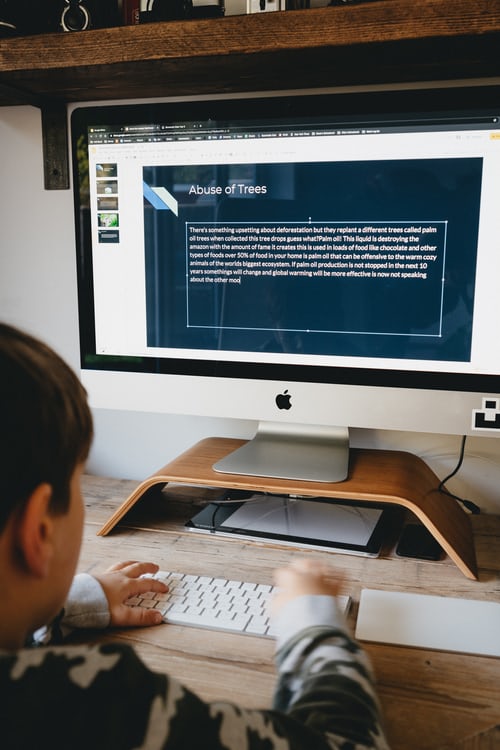With remote learning underway, many schools are attempting to establish guidelines for behavior. Cameras on, dressed, and sitting in front of the computer at the time school starts is par for the course at many schools.
Yet, where are your children sitting? Are they slumped on the couch or do they have a desk set up that supports remote learning ergonomics? Do they move around the house depending on their moods?
Child psychologists recommend having a dedicated space for school and homework because it helps the children focus. That space can be a kitchen table, a corner of the living room, or even a full desk set up in their room (for older children.) If your child naturally gravitates to a particular area, see how you can help them make the most of it for their workspace.
You probably know that having a comfortable chair and computer setup designed for your height and needs is far better for you than crouching over your laptop on the couch. It’s not different for your kids.
Remote Learning Ergonomics for Kids
Plus, now that they’re pulling 6+ hours a day on an iPad or computer, the kids need the kind of support that comes with a comfortable chair (that helps them maintain good posture.) Next, depending on their ages and work styles they may also benefit from a stand-up desk or a separate ergonomic keyboard and mouse.
1- Screen Height – An ideal screen height is eye-level. Hours bent over an iPad can cause “text neck” and long-term problems. Same with crouching over a computer screen that’s too low.
You can raise your child’s screen with any number of devices created for that purpose. There are adjustable stands for iPads and laptops so you can raise and lower the screens as needed.
2- Proper Viewing Distance – You don’t want your child to have to squint to see the screen. Nor should they have lean far forward. The ideal position for the screen is where your child can see it easily (and read/interact) while sitting upright in a chair.
3- Foot Rests – Ergonomic specialists recommend having your feet flat on the floor. So if your child’s feet don’t reach, then you can use a footstool. Some children’s adjustable furniture sets offer them.
4- Chairs and Tables – Kids are active. They’ll rock their legs back and forth and most will find it hard to sit still for very long. It’s even worse if the chair is too big for them. Have you ever seen a small child sink in a dining chair? There’s adjustable children’s furniture on the market that can grow with your child. Otherwise, a pillow or book can boost them up.
You can have your child sit in the area where they tend to work and eyeball their posture to gauge their needs. Can they sit straight and see the screen with craning their neck? Can they place their feet on the floor comfortably? If they’re using a computer, are their elbows able to bend naturally and reach the keyboard?
If you have older children who are using a computer all day, then they’ll need an ergonomic keyboard and mouse set up. These reduce the risk of repetitive strain injuries. Regular stretching breaks and chiropractic care can also help your child feel his or her best.



